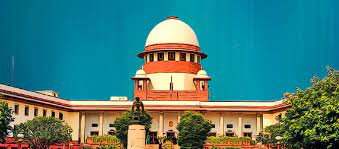The committee, which evaluated the scope and quality of the state government’s actions in June of last year, praised the State Transport Authority’s initiatives such as Project Rakshak, Vahak, and the National Road Safety Short Film Festival.
Odisha has earned the distinction of being one of the country’s ‘High Performer’ states in putting in place safety mechanisms to arrest the rise in road accidents, according to an assessment done by the Supreme Court Committee on Road Safety, with 66 percent implementation of the prescribed road-safety measures (SCCRS).
According to officials, the SCCRS, which assessed the extent and quality of actions taken by the state government in June last year, praised initiatives of the State Transport Authority such as Project Rakshak, Vahak, and the National Road Safety Short Film Festival. The team also praised helmet use in the city of Bhubaneswar.
The SCCRS also lauded the smart queue system put in place at the Regional Transport Office in Bhubaneswar. According to the assessment report, the smart queue system is working perfectly fine with the assistance of supplementary infrastructure.
Though the state is in the higher performing category, the report stated that there are many improvements that need to be made, such as a special focus on enforcing rules and laws, as well as equipment and infrastructure availability and functioning.
The agency received a 19% score out of a possible 25% in the ‘Institutional Category,’ which includes the functioning of the lead agency and the use of the road safety fund. Similarly, the state received 15.7 percent out of a possible 25 percent for enforcement, and 14.4 percent out of a possible 25 percent for engineering. SCCRS has given a score of 10.5 percent in emergency care and 6.3 percent in education out of a total of 15%.
It is worth noting that, in accordance with the Supreme Court Committee’s recommendations, the Transport Department is constructing Truck Terminals and developing a comprehensive Trauma System Care Plan. Engineers, commercial drivers, traffic police officers, highway engineers, and planners receive road safety training in a systematic manner via a well-planned training calendar.
The command-and-control centre for CCTV and ANPR will be operational soon, and the footage will be continuously monitored for the purpose of issuing e-challans to traffic violators. The frequency of enforcement drives has been increased, and officials believe that a consistent effort in this area will help reduce road accidents in the state.

